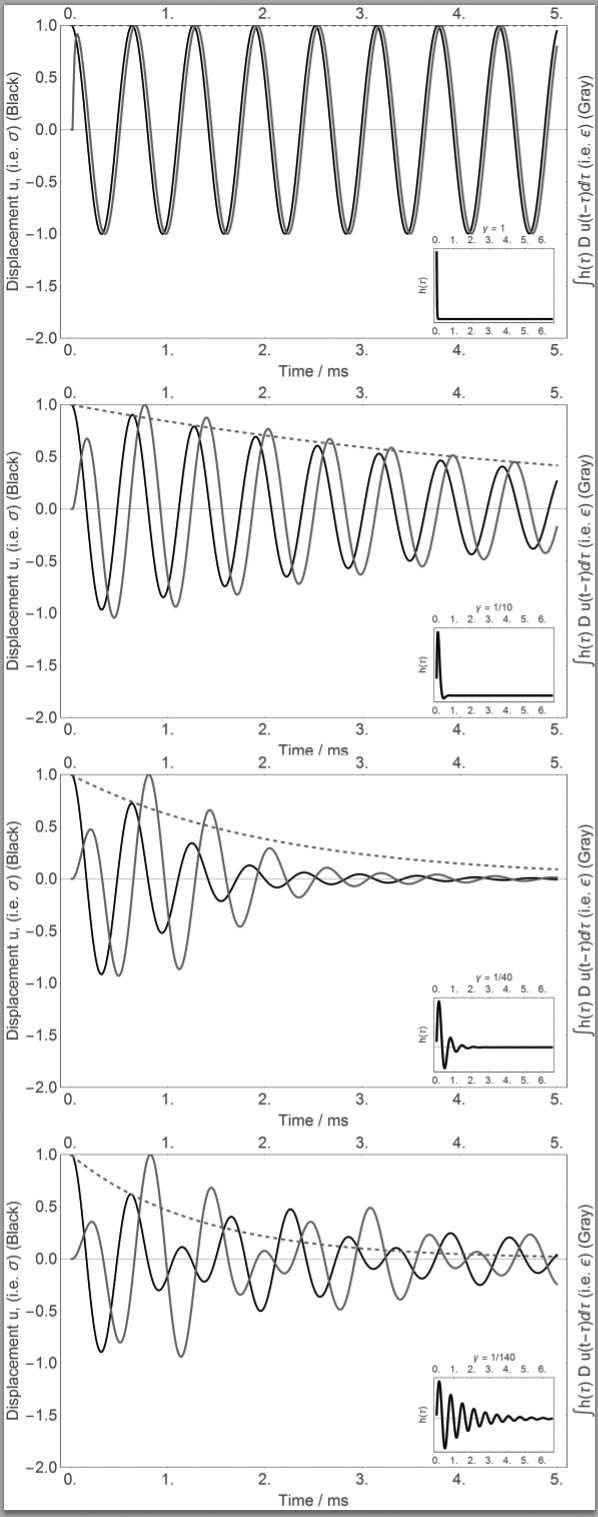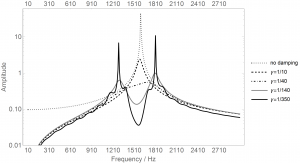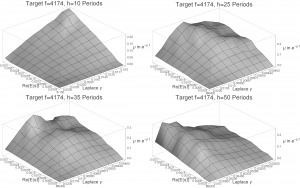Viscoelastic damping in musical instruments is the damping intrinsic in plates or membranes. It is one of the most important parameters determining the sound of musical instruments. If damping is too high in the soundboard of e.g. a piano, the piano sound is more or less only the sound of the plain string. If damping is too low much reverberation is present in the sound. Therefore by tuning the viscoelastic damping instrumet builders can design the sound in terms of how much character, spaciousness or ‘bite’ it should have.
Listen to the sound examples in the Power Point presentation on viscoelastic damping below:
Power Point Presentation Viscoelastic Damping
But viscoelastic damping does also lead to nonlinear distortion and sidebands. Below are time series of stress-strain relations for no viscoelastic damping (top) and increasing amont of viscoelasticity (next lower plots). Not only the time series is decaying, it shows amplitude modulations:

The Fourier transform of these plots show the increasing side bands of the originally purely sinusoidal:

A Finite-Difference Time Domain (FDTD) model of this damping can vary the amount of damping via a damping function. Still as the process is nonlinear, sharper damping functions do not always lead to more damping. Due to the sidebands additional energy might come in again after a delay, viscoelasticity is a memory effect. Below are results of functions when varying the damping function. Right front corner is no damping. Increasing damping function leads to a stronger damping at first (up axis), still then the damping is getting weaker again:

For all details of the model see lit. below:
Lit.:
